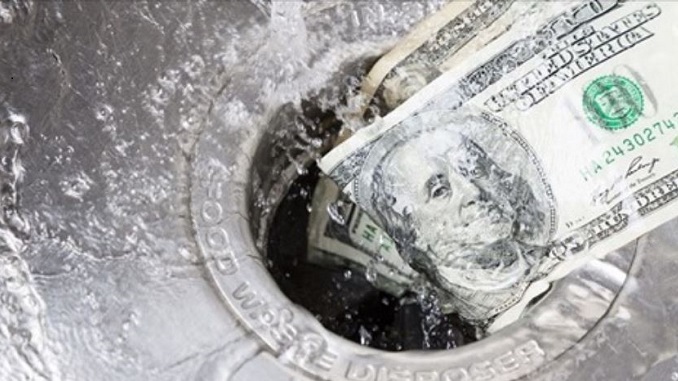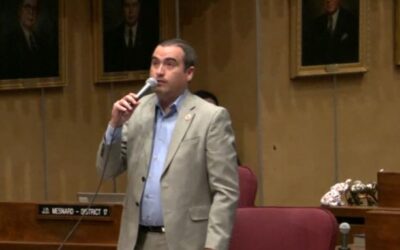By Corinne Murdock |
The city of Phoenix received $10 million in federal funding to establish an equitable “Cultural Corridor” near Phoenix Sky Harbor Airport.
The city announced the funding over the weekend, which originated from the Rebuilding American Infrastructure with Sustainability and Equity (RAISE) program. The $10 million came from $1.5 billion in a discretionary fund through the RAISE program opened up in December.
With these recent RAISE funds, the city of Phoenix will develop vacant lots west of the airport. In a press release, the city identified neighborhood stability, identity creation, and economic expansion as their primary goals.
Although the $10 million came this month, final drafting for the Cultural Corridor was published in April 2020. According to these draft plans, the corridor will serve as a multicultural heritage trail navigable via public transit.
Seven individuals were proposed as those to be featured on the trail: Father Albert Braun, Cesar Chavez, Sister Mary Luca Junk, Silvestre Herrera, Wing Ong, Calvin & Georgie Goode, and John Lewis. Each individual will receive their own themed “zone” within the Cultural Corridor: the Goode-Luca-Ong Community Champion Zone, the Silvestre Herrera Heroism Zone, the Cesar Chavez Labor & Civil Rights Zone, the Father Albert Braun O.F.M. & Medallion of Honor Zone, and the Anne Ott Education Zone.
Additionally, seven landmarks were selected: Historic Sacred Heart Church, Santa Rita Center, Ann Ott School, Silvestre Herrera School, Tanner Church and other churches in the area, Austin Market, and neighborhood parks.
The draft plan also identified 65 properties that were either currently listed as or eligible to be enlisted as historic at the national or local level.
The final draft for the corridor also identified seven areas as historic neighborhoods: the Eastlake Park Neighborhood, El Campito Barrio, Golden Gate Barrio, Cuatro Milpas Barrio, Ann Ott Neighborhood, Green Valley Neighborhood, and Rio Salado San Juan Bautista Neighborhood.
This is the latest round of federal funding for the project. The city received a Federal Aviation Administration (FAA) grant for its implementation phase from 2017 to 2019.
Mayor Kate Gallego said in the weekend press release that the grant would issue warranted recognition to communities surrounding the airport.
“This grant will enable us to honor the legacies, histories, and identities of existing communities while also improving safety and mobility in the region,” said Gallego.
The Cultural Corridor arose from the airport’s Land Reuse Strategy that first began in early 2016. Developments on the vacant land include a workforce training center, mixed-use residential properties, commercial lots abutting mixed-use office spaces, and a public park adjacent to a commercial recreation facility. The Cultural Corridor would run from the light rail terminal near East Washington and South 7th streets, down South 16th Street, along East Buckeye Road, along East Pima Street, and southbound past the I-17 until it hits the Rio Salado River.
Several private developments will be established near the light rail terminal where the Cultural Corridor begins: apartments, mixed-use residential, condominiums, commercial spaces, and a hotel.
RAISE grants aren’t the only source of DOT funding for infrastructure. In March, Tucson received another $900,000 from the DOT’s Reconnecting Communities Program to build another biking and pedestrian bridge, covering about 56 percent of the total project cost of $1.6 million. They were approved while 10 other Arizona cities, counties, and one nonprofit were denied funding. The DOT revealed that it prioritized projects engaged in equity and environmental justice work.
The debut of the Biden administration’s RAISE grants saw one award in Arizona: over $10.6 million to the city of Yuma to convert a historic building into a multimodal public transit center. Project costs totaled over $17.7 million.
RAISE is a continuation of its predecessors dating back to 2009, former President Obama’s first year in office: formerly Better Utilizing Investments to Leverage Development (BUILD) and initially Transportation Investment Generating Economic Recovery (TIGER). Through 2022, all three programs have issued over $12.1 billion in grants for 934 projects, 18 of which were Arizona-based projects. RAISE alone has issued over $3.2 billion in grants to 255 projects since launching in 2021.
Last year, the RAISE program gave over $75 million to four projects in Arizona: $261,000 to Navajo County for a regional multimodal planning study of 16 miles of pedestrian and bicycle pathway (total project cost: $290,000); $25 million to Phoenix to build a bicycle and pedestrian bridge over the Rio Salado River (total project cost: $34.5 million); $25 million to Tucson to rebuild a bridge less than a mile in length, expand a street from four to six lanes, and build a new bicycle and pedestrian bridge (total project cost: $95.4 million); and nearly $25 million to the Colorado Indian River Tribes to reconstruct 10 miles of road.
Corinne Murdock is a reporter for AZ Free News. Follow her latest on Twitter, or email tips to corinne@azfreenews.com.








